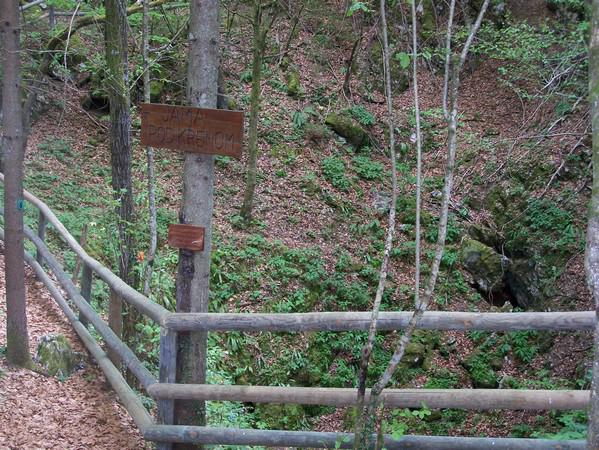
Kočevski Rog is a vast area of old-growth forest in southern Slovenia – one of Europe’s largest. Known primarily for its diverse flora and fauna, it has also played several important – sometimes tragic – roles in recent Slovenian history.
The area consists of a vast limestone plateau covered mostly in dense beech and fir woodland. This is Slovenia’s wilderness at its most primeval: Many parts of Kočevski Rog are virgin forests, graced with abundant undergrowth and untouched by human hands. Many of the forest’s majestic trees have been around for centuries, and the landscape looks much like it did at the dawn of civilization.
The wilderness serves as a refuge for many species of animals rare or nonexistent elsewhere in Slovenia. Wolves, bears, and lynx all inhabit Kočevski Rog. The absence of human settlement and farming has resulted in an environment where wildlife, even the species requiring large territories, can live without coming into conflict with humans.
The area around Kočevski Rog has always been thinly populated, but became almost totally devoid of humans at the start of World War II when Hitler resettled the ethnic German Gottschher population that had lived on the edges of the vast woodland for centuries. When the Communists came into power after the war, their forced exile became permanent.
During the war, the dense woods Kočevski Rog became an ideal hideaway for the Slovenian resistance movement. The Partisans built extensive facilities in the forest, including Baza 20, a veritable town consisting of residential buildings, printing presses, a hospital, and command centers. Hidden from the enemy, it operated for much of the war is still considered one of the foremost symbols of Slovenia’s resistance movement. Today, the structures are still standing and form a popular museum of the resistance movement.
Unfortunately, Kočevski Rog is also well-known for the crimes committed by the Communist authorities after the war. The forest was the site of mass killings ordered by the new Yugoslav government. Enemies of the regime were taken to the woods, shot en masse, and dumped into pits. Some of the forest streams ran red for days.
Despte its tragic history, Kočevski Rog is now most well-known as a unique biosphere, whose status as one of Central Europe’s largest virgin woodlands makes it a precious resource on an otherwise densely populated continent.

































































